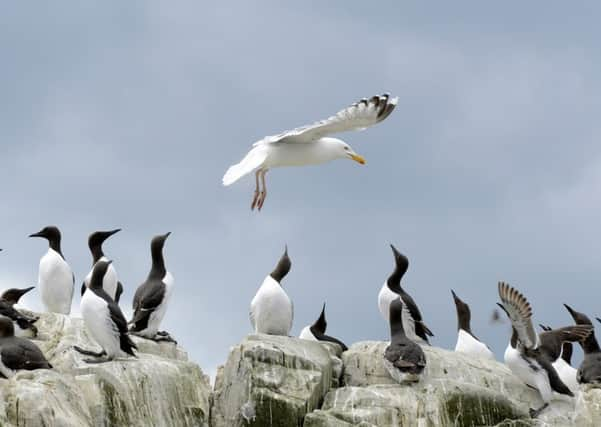Northumberland, Bird Club


Graham told us how he achieved a dream going back to his youth when he first saw an illustration of the Ross’s gull in his Handbook of British Birds.
The rare and beautiful bird was named after the Arctic explorer James Clark Ross and first identified in 1813 in Greenland, but Graham’s search drew him towards North East Siberia, where it is known to breed.
Advertisement
Hide AdAdvertisement
Hide AdHis epic journey took place in 1992, beginning with a coach from Newcastle to Heathrow, from where he flew to Moscow. After a tourist stop in Red Square to see the Kremlin and St Basil’s Cathedral, he met up with his guide from Russian Nature Tours and two fellow travellers, who were Germans who didn’t speak any English.
However, any initial language problems were soon dwarfed by greater difficulties as they flew 3,000 miles to the far North East of Siberia, where the inhabitants spoke their own local language and generally didn’t even understand Russian.
Initially, they flew to Yakutsk on the River Lena, where they saw great grey owl, Siberian jay, the Terek sandpiper with its distinctive upturned bill and nesting grey plovers with a chick in the nest.
Other sightings included Hungarian glider butterflies and Arctic poppies, lady’s slipper orchids, Arctic foxes and hares, but the downside to this was countless midges. Interestingly, he also saw a nesting dusky thrush, a bird he had first seen in the UK when he was teaching in Hartlepool.
Advertisement
Hide AdAdvertisement
Hide AdA four-hour flight to Chersky and a final leg to Ambarchik, on the Kolyma River, brought them to the area where the Ross’s gull is known to breed.
Travelling along the river, they saw Iceland gulls and Sabine’s gulls, then swimming in front of the boat were four Ross’s gulls.
A private helicopter flight was arranged over the East Siberian Tundra. Whilst flying over a small lake Graham noticed a possible nest of the Ross’s gull and signalled to the pilot to descend urgently.
“Alarmingly, he dropped like a stone,” said Graham, “but our reward was that there was a nesting Ross’s gull by the side of the lake.” It was here that Graham took a superb photograph, and this is on record as being the first photograph of the bird in flight. The superb photographs we saw were all taken by Graham with a conventional film SLR camera and zoom lens.
Advertisement
Hide AdAdvertisement
Hide AdTheir stay was in an old hut with one wall missing, but the reward was splendid views of king and spectacled eiders and 45 species of waders, including red-necked and grey phalaropes, the tiny Temminck’s stint, pectoral sandpipers and long-billed dowitchers.
Other interesting species included many nesting birds, such as Bewick’s swans, sandhill cranes, snowy owls with a chick, pomarine skuas and rough-legged buzzards. Less welcome were the midges.
The Kolyma river valley was the area where Stalin set up forced labour camps from the 1930s to the early 1950s. More than a million prisoners perished there.
Although it is now virtually uninhabited, Graham and his party were surprised to be confronted by two National Park wardens, who “appeared from nowhere to investigate why this party of foreign visitors were in their area”. Were they illegally hunting or collecting eggs? It seems the guards had difficulty understanding that they had come merely to look for birds.
Advertisement
Hide AdAdvertisement
Hide AdIt was now time to start the journey home. Returning to village of Ambarchik, they were welcomed in the village hall by the community, who had rarely, if ever, seen non-Siberians.
Graham came across a lady who could speak English. It transpired that she had learned only from books and had never before spoken to an English-speaking person.
Local artists were displaying their paintings of wildlife and among them was one of a Ross’s gull. The artist told Graham he would have to buy it and that it would cost $5. Graham gave the man a $20 note, which was all he had in cash, prompting tears of gratitude. To this day the painting has pride of place in Graham’s study.
Our next meeting is at Bamburgh Pavilion on Friday, December 8. It is a festive evening, which will include three presentations on Winter Birding In Japan, Madagascar, and NNBC Visit to Bulgaria.